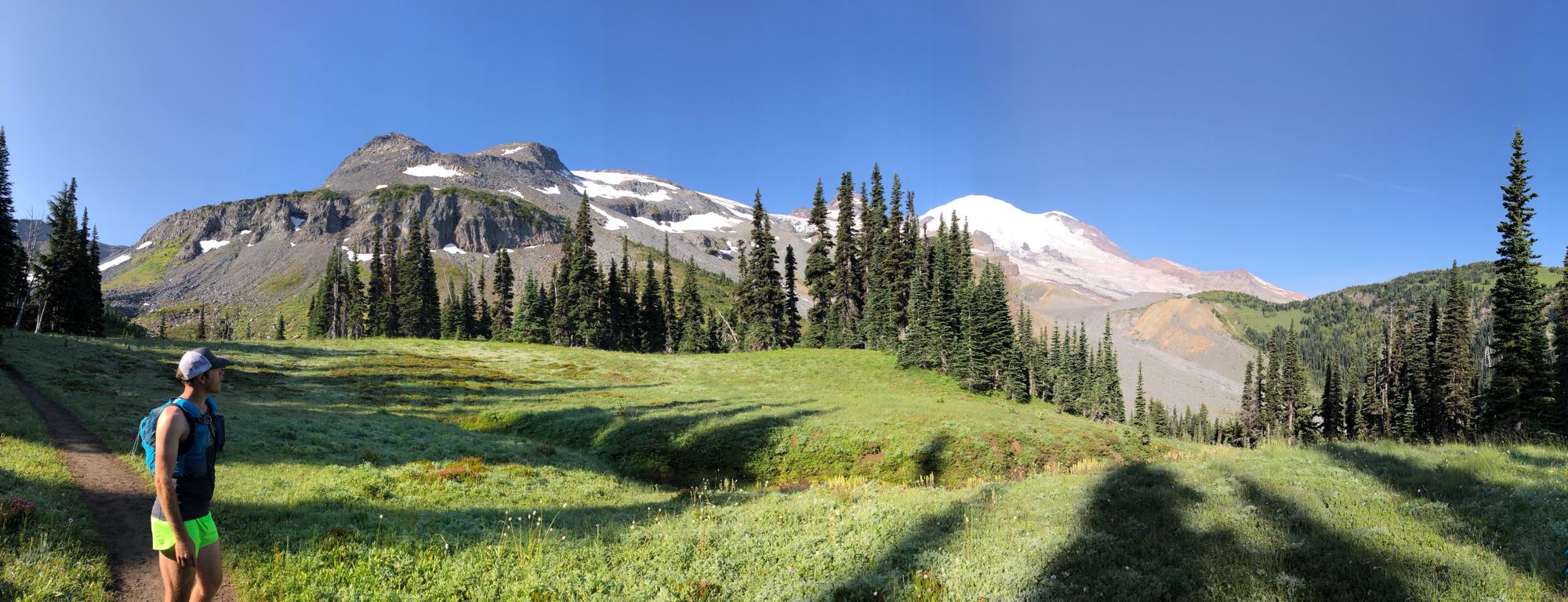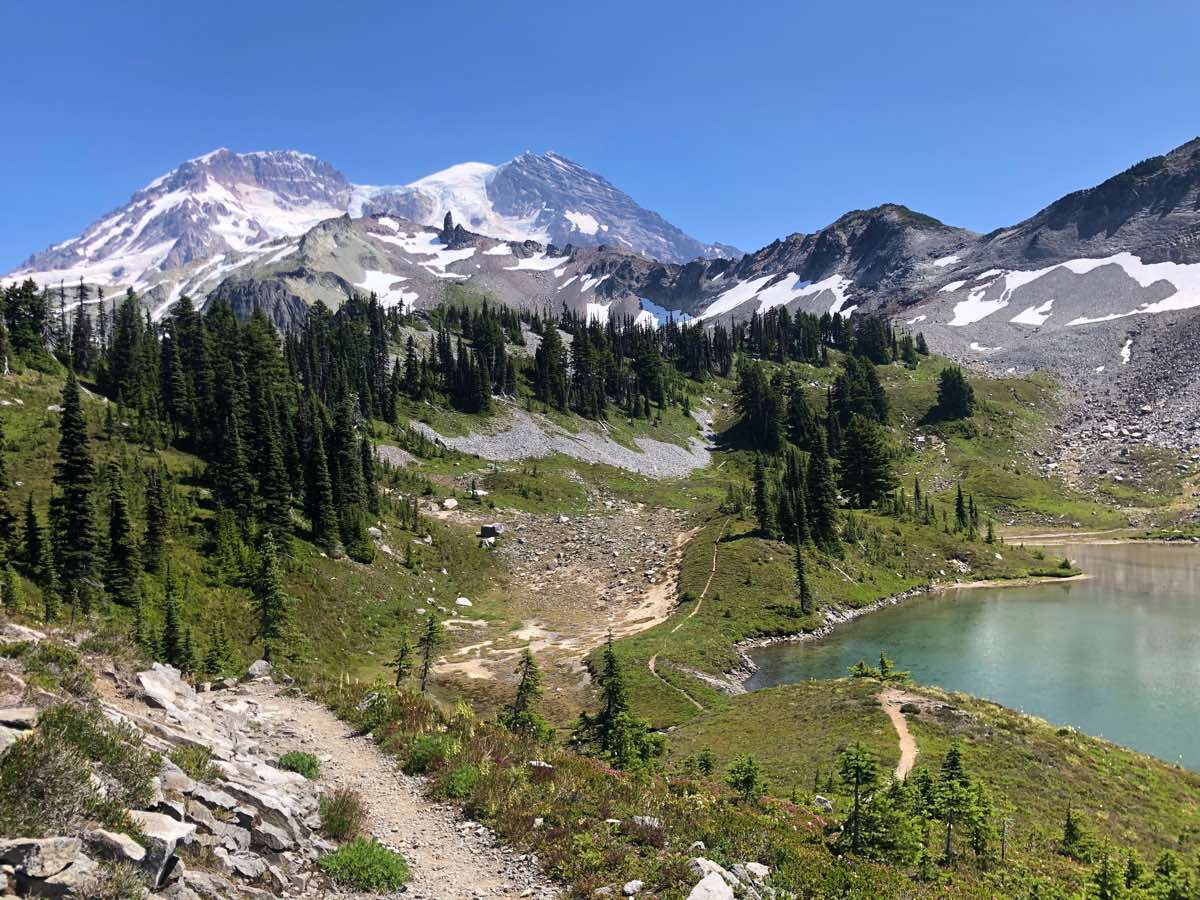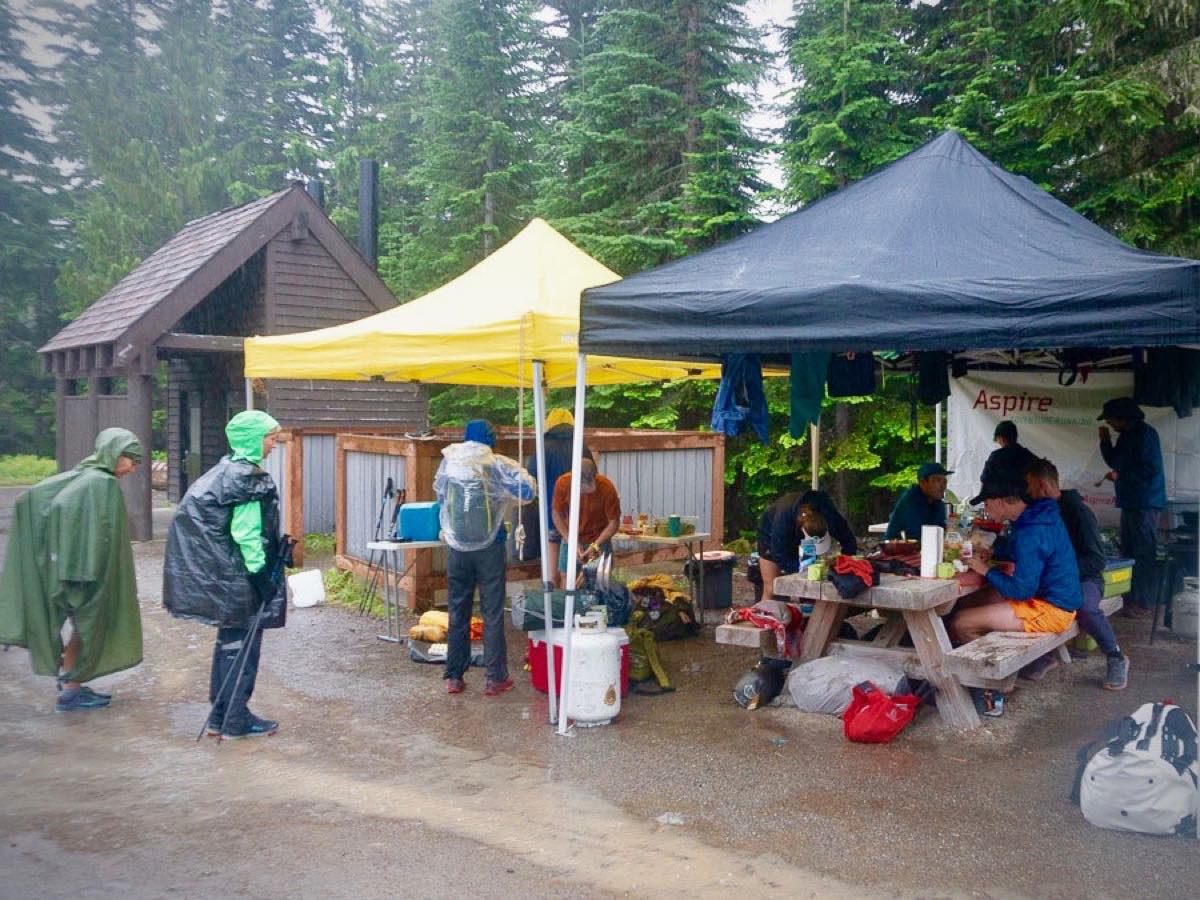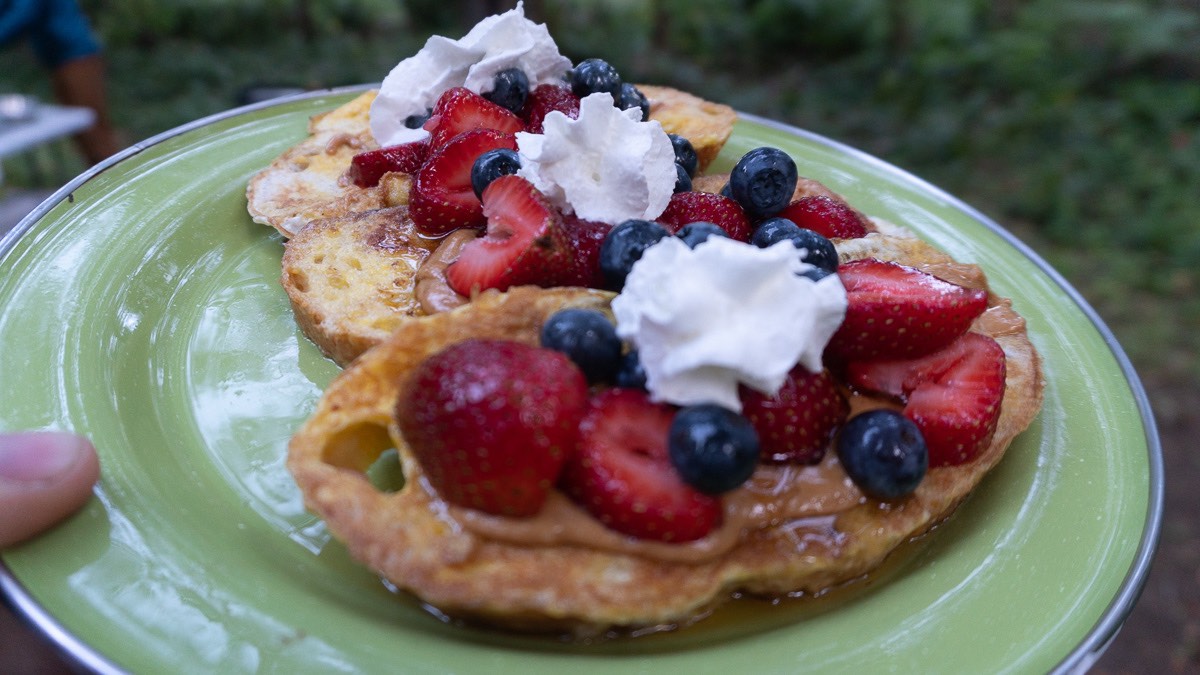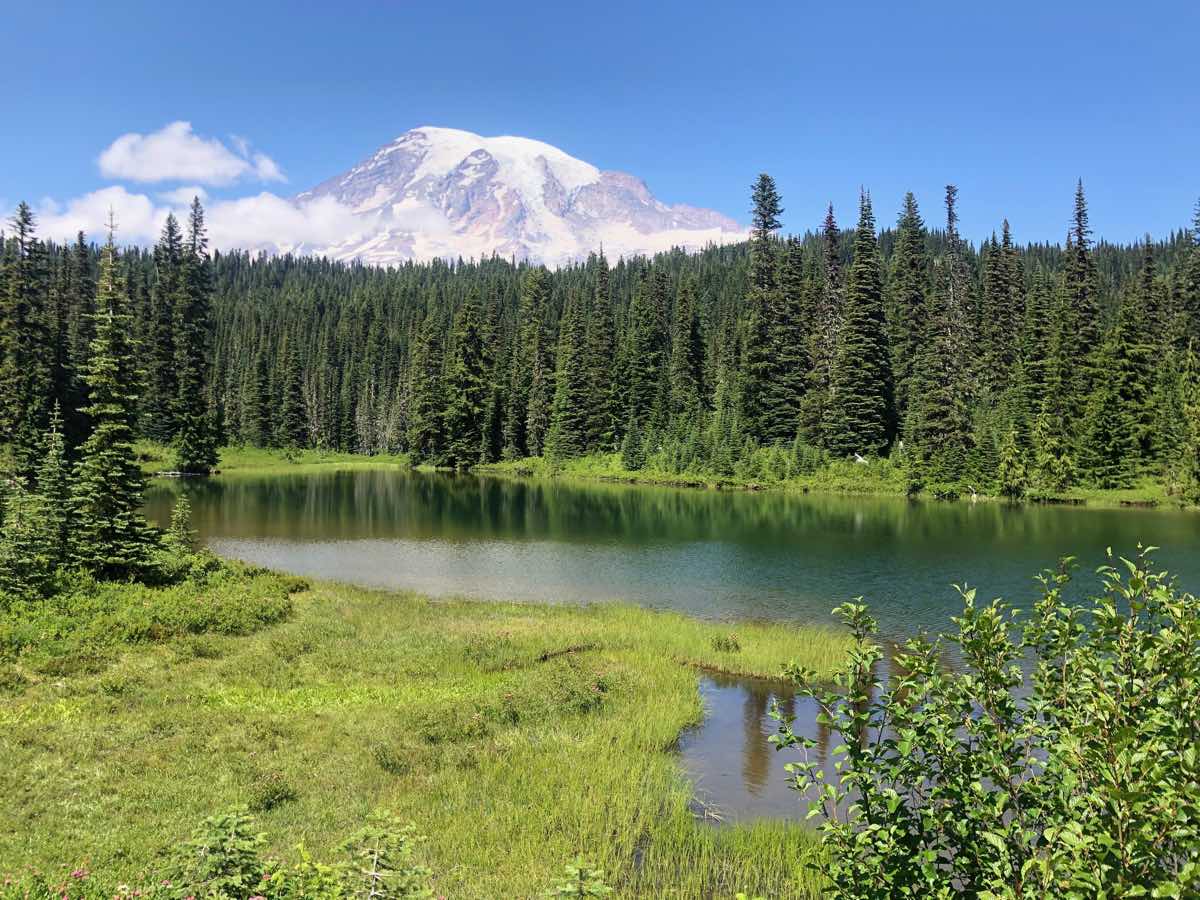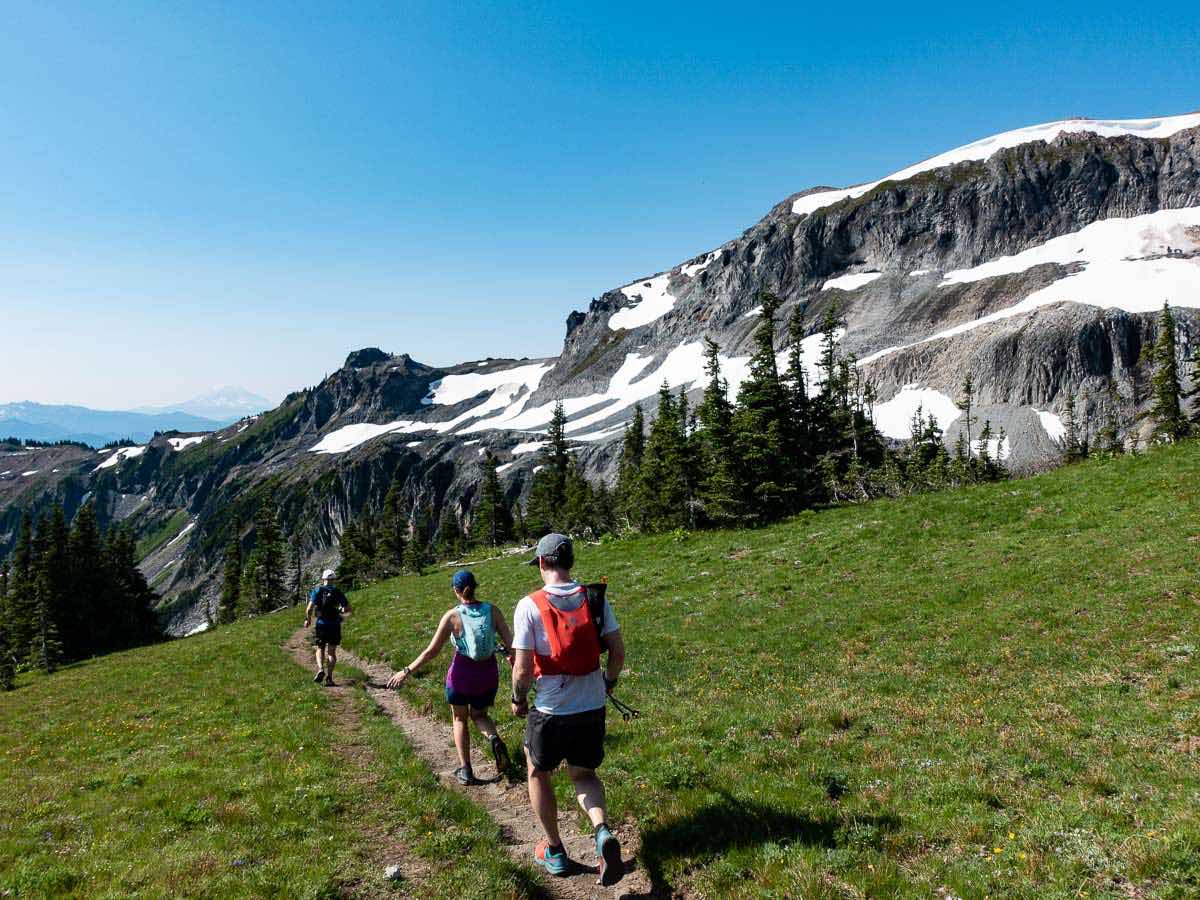In today’s running scene, we have options–lots of options. Our options can be measured in feet, climb, time, distance, difficulty, ease, scenery, a good time, a bad time, well-supported, self-supported, and probably 100 other labels. However, when I want to explore a new place, I tend to do so via one of two means. I research to see how much effort it might take to do a certain route on my own or I sign up for a race that takes place where I want to go. In the racing scenario, all the logistics are sorted for you, and you basically just show up and run. But racing does have downsides in that it limits your route, how long you have to do the adventure, and it often means you are adventuring with several hundred or more other people. The upside to planning your own adventure in a new location is that you’re not bound by all the regiment of a race, but in contrast the logistical planning of getting permits, reserving campsites, route finding, and more can take a lot of time and effort.
Enter a third option for exploring new-to-you places, the running camp. In recent years, a number of running camps have developed and they now offer us an intermediate option between racing and a choose-your-own-personal adventure. This year, I participated in a camp put on by Aspire Adventure Running. They define their mission as, “Supporting runners who want the challenge of distance running without the congestion and structure of a race: runners who love the mountains and desire the freedom of movement in these sacred spaces.”
To set some context, I’m not new to ultrarunning or even multi-day races and self-created adventures. I’ve had my fare share of long adventures covering big distances over multiple days in rugged places. It was with this lens that I went into the three-day trip circumnavigating Mount Rainier via the Wonderland Trail supported by the team at Aspire Adventure Running. Before the adventure, I had thought to myself, Who would pay for someone to guide them around this or other trails? This trip has to be for people who are from out of town or who have less experience. Once out on the camp, I quickly learned there was way more to it than just these basic constraints I had in my head.
Aspire Adventure Running has a list of camps in a variety of locations, such as on Wonderland Trail (93 miles/three days), Lost Coast (60 miles/three days), Yosemite Backcountry (100 miles/four days), North Cascades Traverse (80 miles/four days), and more. As you can see, the daily running distances are significant–at least 20 miles a day–and the locations are remote with technical trails and significant elevation change. The trips are supported, meaning you bring what you need to cover the distance every day, your shoes, running clothes, poles, jackets, a way to carry water, and more. After that, Aspire manages the rest. That is, they take care of permitting, food, reserving campsites, and moving gear from one location to the next while you’re out running.
Once you have chosen a trip, you sign up much like a race. Aspire even uses UltraSignup for their registration! You receive confirmation along with some basic information about what to expect and what supplies you need. As the trip date approaches, they send more detailed information including expected weather, trail conditions, and the meeting location and time.
Since I chose to do the Wonderland trip in Mount Rainier National Park and live in Portland, Oregon, I only needed to drive a few hours to get to the meeting spot prior to camp starting. Those who flew in were met at the airport with shuttle transport to the camp’s meeting location just outside the park. From there, Aspire transported us to the first night’s campsite before hitting the trail the next morning.
The first night was simple and about getting ready for three big days on our feet covering the 93 miles and 20,000-plus feet of climbing. The six other runners and I all got to know each other while we set up our individual tents in the campsites reserved by Aspire. You can bring your own sleeping set-up or rent it from them. After set-up, Aspire cooked an incredible meal of salmon and greens. Aspire provides food options for those with dietary restrictions and preferences–you indicate them when you sign up for a camp. After dinner, Aspire’s owner Abram Dickerson and the rest of the support team walked us through the camp’s agenda. This included how each day was structured distance- and climbing-wise. It also covered roughly how long others had completed the sections in the past to give us an idea of what to expect. They also explained their safety measures. At the most basic level, you are on your own to complete the day. You can go as fast or slow (within reason) as you want. There is a sweeper who stays with or just behind the last runner and then another sweep, called the super, who comes in from the opposite direction. The super lets you know where camp is set up as you pass them. Once the sweep and the super meet and all runners are accounted for, they continue on together.
The post-run gathering was my favorite part of each day. At the day’s finishing location, propane heaters and a table full of snacks awaited. We’d all talk about our experiences, commiserating about the tough sections while also highlighting the incredible scenery. We talked about the wildlife we encountered, like the close sighting one camper had with a bear and the chipmunk that tried to eat my GoPro.
If it’s not yet become clear, each day starts and ends with food. A lot of it. Mornings were made up of hot coffee or tea and a full breakfast. Giant stacks of French toast with fresh fruit, breakfast sandwiches, and breakfast burritos were on the menu. Leaving camp on a full stomach was never a problem! Each morning, we could also make a sandwich or grab some real food to take on the trail. At the closing of each leg, when you reached the next camp location, cold drinks and snacks waited for you to munch and sip on.
Oh, and there was also a hot-water, portable camp shower to use while dinner was being made! Yes, this was pretty close to glamping, with running in an incredible place sandwiched in the middle.
Each night before heading to bed, the Aspire support team would cover the logistics of the next day’s route. The briefings included everything from basic information like distance and climbing along with their favorite ponds or streams to stop at, safety information, confusing sections of the trail to be ready for, or even just spots to pull out the camera.
Ahead of time, I had expected that we’d be running in a group, but in Aspire’s camp we took on each day’s running and hiking at our own pace. You could buddy up if you wanted or do your own thing. On day one, I stayed with the group early then spent the next eight hours solo. On day two, I stayed with the group until the halfway mark. We all stopped and snacked by a lake around lunch time, and then I took off on my own. On the third day, I stayed with the sweeper and another group for most of the morning, until we stopped to filter water in a stream. The two people I was with decided to spend a little more time taking in the incredible view along the stream and I decided to keep going. This freedom changed my way of categorizing this trip and ultimately my view on who these supported adventures are for.
This leads me back to my early question, who is this type of adventure for? The answers seems to be in Aspire’s mission statement of “running without the congestion and structure of a race.” As I said, before going to the camp, I’d thought it was an experience designed for people with little multi-day or backcountry experience. And that it certainly can be and does well. But I learned it can also be for more experienced runners looking for a no-hassle adventure in a new place, several days of good training at one’s own pace, new running friends, and more. My wife may have summed it up best when she explained to a friend, “Travis is going to a running camp for adults.”
Perhaps the greatest surprise was that last aspect, meeting new running friends. The camp fostered a huge sense of community and bonding. Abram and the Aspire team were supportive, friendly, and just a lot of fun to be around. Their knowledge allowed us to hit cruise control. I could go out every day and just do the distance and enjoy the day. I didn’t have to worry if my crew would be able to find me, if my pace was off, or what I’d cook myself on my camp stove afterward. I came into this experience unsure of where a running camp fit in the scene and what label to apply to it. Now I consider it another option for exploring a new place, taking on a big multi-day push in an incredible place, connecting with nature and new people, and to feel secure with the assistance of experienced staff.
Aspire Adventure Running’s camps cost between $1,200 and $1,600, depending on the event and how early you sign up. Yep, that’s an investment, but arguably not a whole lot more than running a 100 miler in some case cases, by the time you add in lodging, race fees, and food costs. If you had asked me before going on this trip if I’d ever choose a thee-day supported trip over a 100-mile race as one of my big trips in a year, I would have said no. Now I’m scanning the Aspire website for what adventures they have cooked up in 2020.
Call for Comments (from Meghan)
- Have you participated in an Aspire Adventure Running camp or any other running camp? What was it like for you?
- Who do you think running camps are designed and best suited for?
